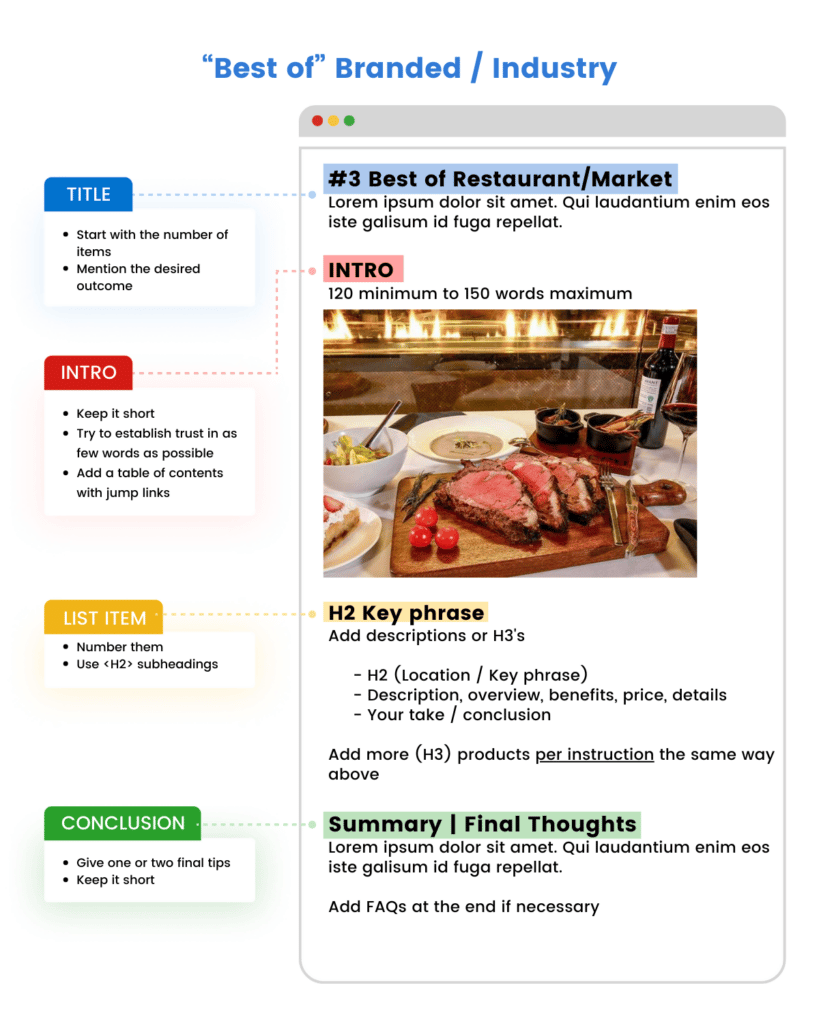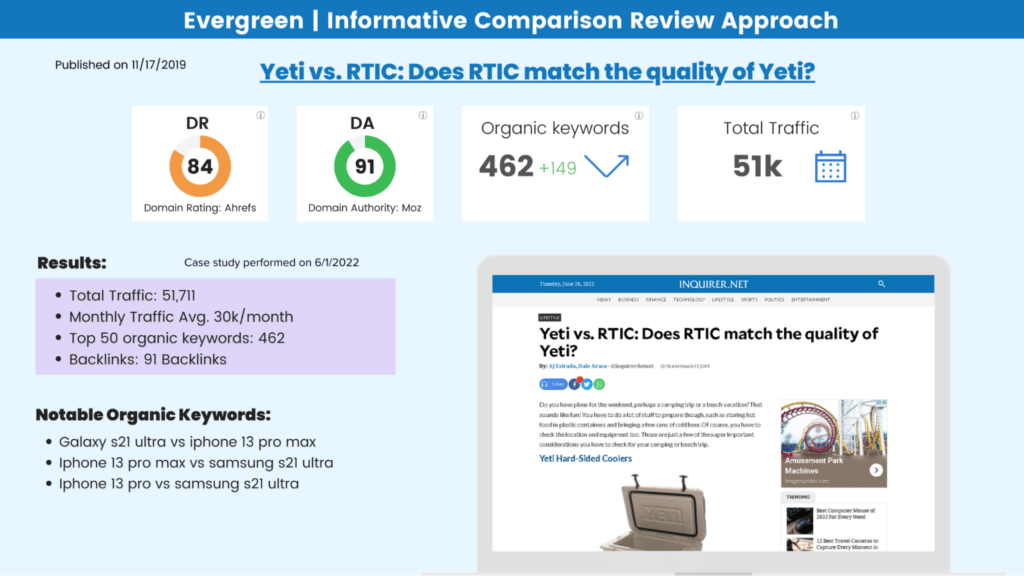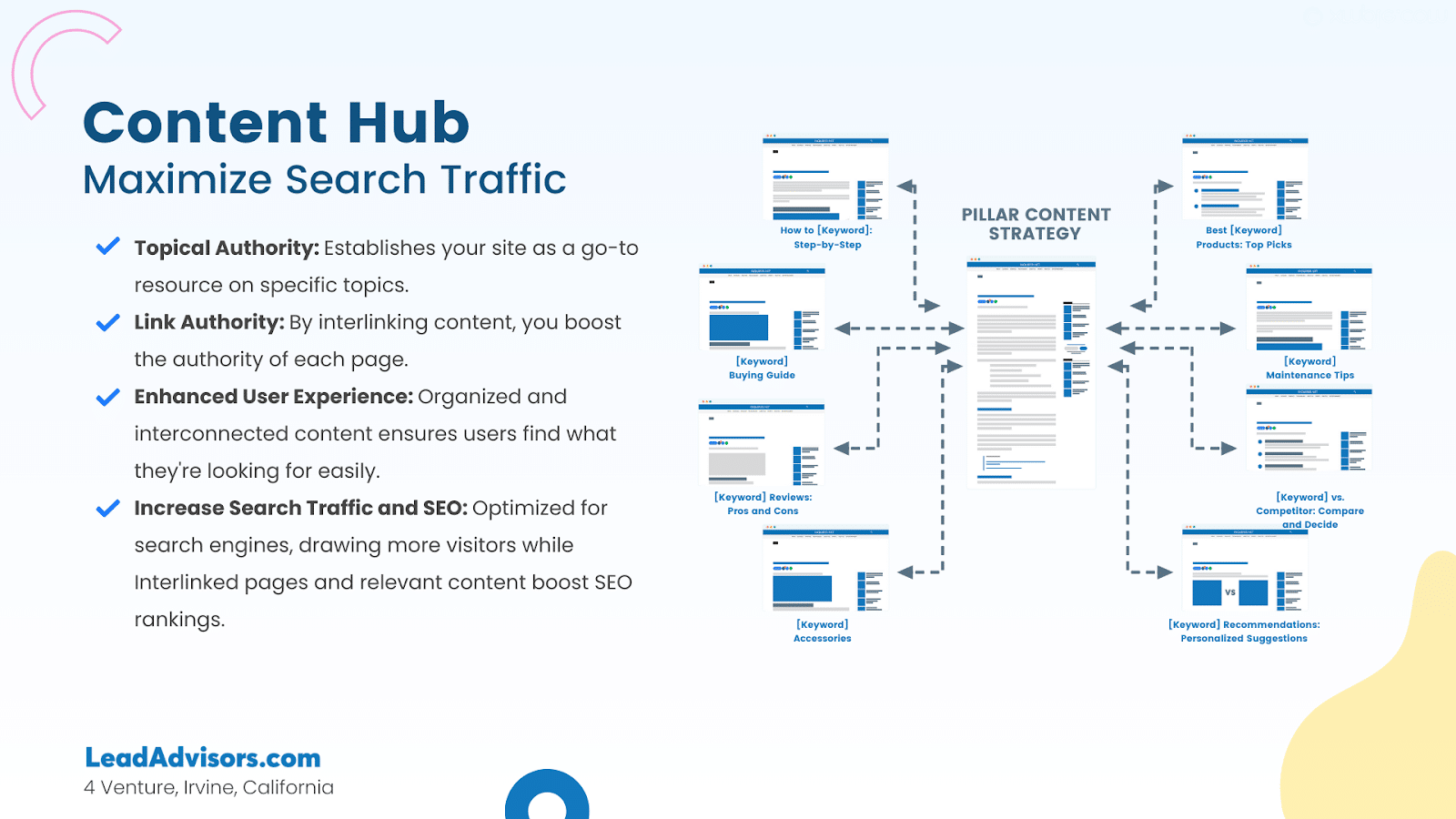Brand reviews have become increasingly important for businesses. However, it can be hard to get ones that are reliable and objective. You never know if the person writing the review is actually a customer or just someone with an axe to grind.
A single positive or negative review can make or break a business. Not only do you have to worry about the impact on your sales, but also on your reputation.
A quick Google search will show potential customers value online reviews when purchasing decisions. 72% of consumers say that positive reviews make them trust a local business more.
Thus, if you own a business, it is essential to have a strategy for handling your online reputation. So, how important are reviews, really?
The Ever-Growing Impact of Reviews on the Customer Journey
In the past, the customer journey was linear. A customer would see an advertisement, enter the store, make a purchase, and then leave. However, in recent years, that journey has become much more convoluted.
With the advent of social media and the internet, consumers now have access to abundant information that can help them make informed decisions about their purchases. As a result, the customer journey now involves multiple touchpoints across different channels.
One area where this is particularly apparent is online brand reviews. According to a recent study, 84% of consumers say online reviews are important when making a purchase decision. Furthermore, 61% of consumers say they read online reviews before making a purchase, even if they intend to buy in-store. This means that online reviews are playing a hugely important role in the customer journey.
This is why it’s more important than ever for businesses to ensure that their online presence is strong and that they are actively managing their online reputation. After all, if potential customers can’t find good reviews about your business, they’re likely to take their business elsewhere.
How to Leverage Reviews for Brand Recognition
Brand reviews can be a powerful marketing tool—if you know how to use them. Below are key reasons to leverage your online business reviews.
1. People trust online reviews as much as personal recommendations.
Think about it—when was the last time you purchased without checking the reviews first? These days, we rely on reviews to give us an idea of what we can expect from a product or service before we hand over our hard-earned cash. 90% of consumers say online reviews influence their buying decisions.
2. Reviews provide social proof.
Social proof is the psychological phenomenon whereby people copy the actions of others to feel more comfortable in a situation. When it comes to online shopping, potential customers often look at brand reviews to see if other people had a positive experience with a product or service before they make a purchase themselves.
3. Builds Trust and Credibility.
Brand reviews also help build trust and credibility with potential customers. With so many businesses to choose from, it can be difficult for customers to know who to trust. It provides potential customers with an insight into what it’s like to do business with you.
4. Increase in Visibility and Brand Exposure.
One of the main reasons that online reviews are so important is that they help increase your visibility. Positive business reviews can help generate word-of-mouth marketing for your business.
5. They Help You Stand Out From the Competition.
In today’s competitive marketplace, ensuring that your business stands out from the crowd is more crucial than ever. And one method to do this is by actively managing your online presence and ensuring they are positive. It will show potential customers that you are serious about providing a great customer experience and are inclined to go the extra mile to ensure they are content.
6. Enhance your social media marketing strategy.
Including business reviews in your social media marketing strategy can be a great way to build trust with potential customers and followers. Sharing positive reviews on social media can help you increase your reach and attract more leads.
7. Boost employee morale.
In addition to attracting new customers, brand reviews can also boost employee morale. Showing your team members that customers recognize their hard work can help them feel appreciated and motivated to keep doing their best work.
8. Make better business decisions overall.
Finally, online reviews can help you make better business decisions by providing an outside perspective on your company’s performance. When combined with other data points, such as financial information or website analytics, online reviews can give you a well-rounded audit of how your business is doing and where improvements need to be made.
The Ever-Expanding SEO Effect of Local Business Reviews on Building Brand Awareness
Local business reviews are among the many factors that Google considers when determining your search engine ranking. In fact, according to Moz, “review signals” are thought to make up about 9% of what Google considers when determining where to rank a local business in its search results.
While that may not sound like a lot, it puts local business reviews on par with other important ranking factors like link signals (11%) and on-page signals (10%). If you pay attention to your local business reviews, you could take advantage of an opportunity to improve your SEO.
Google Uses Local Business Reviews in Its Ranking Algorithm
One of the main ways that Google decides which businesses to rank at the top of the search results is by looking at online reviews. In particular, Google pays attention to the quantity and quality of reviews and how recent they are.
Click-through-rates (CTR)
Besides that, reviews can also impact the click-through rate (CTR) for your listing in the search results. A listing with good reviews is more likely to get clicked on than a listing with no reviews or negative reviews. And since CTR is a ranking factor, positive reviews can help you rank even higher!
Online Reviews Give You an SEO Edge Over Your Competition.
Another way that online reviews can impact your SEO is by giving you an edge over your competition. If two businesses are selling similar products or services and one has significantly more positive reviews than the other, guess which one will rank higher in the search results? That’s right—the one with more reviews.
By understanding how local business reviews impact your ranking in the search results, you can put yourself ahead of the competition and attract more customers than ever before.
What Information Should the Ideal Review Incorporate?
A brand review is a type of article that assesses the strengths and weaknesses of a particular product or company. They are similar to product reviews but take a more holistic approach, considering the customer’s experience with the brand.
Reviews are valuable marketing tools. It can shape consumer perceptions, drive traffic to your website, and boost sales. But what should the ideal review incorporate?
Length
When it comes to brand reviews, longer is always better. A study by BrightLocal found that 78% of consumers believe longer reviews are more trustworthy and credible. So, aim for at least 500 words when writing one. The more detail you can provide, the better.
Optimized Images
Shoppers want to see user-generated imagery and video more than ever before. In fact, according to a study by Curalate, 67% of consumers say that user-generated images are very influential in their purchasing decisions. So, if you can incorporate user-generated imagery and video, do it!
Rating
When it comes to ratings, authenticity is key. Consumers are savvy enough to know when a 5-star rating is fake or biased. Instead of trying to game the system with fake reviews or inflated ratings, focus on providing an authentic and accurate portrayal of your brand. That way, you’ll build trust with potential customers—and that’s worth far more than any 5-star rating.
However, a review is much more than just giving your two cents on a product. When done right, they can be an informative, engaging, and entertaining read that helps potential customers make informed decisions about the products they’re interested in. This guide will show you how to compose brand reviews that accomplish all those things and more.
A Comprehensive Guide to Writing Brand Reviews: In 5 Steps
Well-written content with the right information offers the best marketing benefits.
DOWNLOAD OUR FREE TEMPLATE FOR WRITING HIGH-CONVERTING BRAND REVIEWS!
Before You Begin: Do Your Research
Before you start writing, it’s fundamental to do your research on the product you will be reviewing. It includes reading up on the product itself, as well as any user reviews or ratings that are available. It will give you a good foundation of knowledge to work from as you start writing your review.
The more information you have, the better equipped you’ll be to write a comprehensive and informative review.
Writing reviews can seem daunting, but it doesn’t have to be! Following these simple content structures, you can write an informative and helpful review informing your readers’ purchasing decisions.
Step 1. Writing the Introduction
After crafting a headline that sparks interest, this section is crucial to cementing the tone and structure of the entire review. Your introduction is your chance to hook your reader and give them a taste of what’s to come. Keep it short and sweet, and ensure it sets the tone for the remaining of your post.
Keep your audience in mind when writing the introduction so that you can tailor the content to their needs. Here are a few best practices for writing an introduction that will engage your audience and give them the necessary information.
Satisfy Search Intent
It may seem like a no-brainer, but it’s worth repeating: before you sit down to write your review, consider who will be reading it. Are they looking for an in-depth analysis of the product? Or are they just trying to get a general sense of whether or not the product is worth using? Keep their needs in mind as you write so that you can tailor the content of your review accordingly.
Be Concise
Get straight to the point. 100-150 words will do. Provide a brief description of the product and its specifications.
PAS Framework
As we mentioned in our guide to Writing Product Reviews, it’s vital to empathize with your audience. An effective method to suffice this is with the PAS intro formula.
PAS, or the “Problem-Agitation-Solution” formula, is a great way to structure an effective introduction to your blog post.
Let’s break down each part of the PAS formula in more detail.
Identify Your Reader’s Problem
The first step in writing a PAS introduction is identifying your reader’s problem. What pain point are they struggling with? What challenges are they facing? Once you’ve identified their problem, you can move on to the next step.
Agitate Their Pain Points
Now that you know your reader’s problem, it’s time to agitate their pain points. In other words, it’s time to make them feel the full weight of their problem. The goal here is not to make them feel bad but to realize that their problem is bigger than they thought and that they need a solution.
Offer a Solution
The final step in the PAS formula is to provide a solution. This is where you provide your reader with relief from their pain points. You can do this by offering advice, in this case, providing a product or service that solves their problem. Whatever you do, make sure your solution is clear and actionable.
Table of Contents
The function of a table of contents is to help readers find information quickly and easily. By including a table of contents in your article, you can give your readers and skimmers an overview/outline of what information is available and where they can find it. Allowing you to divide your document into sections that can be read independently.
Finally, using a TOC can also make it faster for you to revise and update your document over time. If you need to add new information or change existing information, update your TOC accordingly. This will ensure that your readers always have the most up-to-date version.
STEP 2. Main Headings and Subheadings
Structure your thoughts with subheadings. Once you’ve got your introduction down, it’s time to start fleshing out the rest of your ideas. Subheadings are a great way to keep your thoughts organized and break up large chunks of text. Plus, they make for an easy-to-read article that will keep your readers engaged from start to finish.
Make it scannable.
Most people who read reviews don’t read them from beginning to end; they scan them for relevant information. Use short paragraphs, bullet points, and subheadings to make your review more scannable. This will make it faster for your readers to find what they’re looking for and more likely to stick around until the end.
Use images, videos, or infographics to break up your text.
A well-placed image can do wonders for breaking up large blocks of text and keeping your readers engaged. If you need to start using images in your blog posts, now is the time to start! Videos and infographics are also great options for adding visual interest to your articles.
STEP 3. Body: Reviews or Findings
After you’ve given your readers a comprehensive overview of the product, this section presents the evidence and findings that support your claims. It’s important to include all the relevant information about the product or service you’re reviewing.
Here’s a quick rundown of what to enclose in the body of your online review.
Background and Overview
When writing an online review, it’s important to provide some context.
What is the product? What does it do? How does it compare to similar products on the market? Is it made for a specific setting or environment? How so?
Providing this background information will give potential customers a better idea of whether or not the product is right for them.
Compare and Contrast
Next, compare and contrast the product you’re reviewing with other similar products on the market.
What makes this product better than others? Is it made for a specific setting or environment? How easy is it to use? Does it come with any accessories?
This will help readers understand how this product stacks up against its competition.
Evaluating Customer Reviews
In addition to your own thoughts and opinions, it’s also helpful to evaluate customer reviews. How have customers rated it? What do they like or dislike about it? What are their overall impressions?
This will give readers a sense of how well-received the product is by those who have used it. By providing this type of information, you’ll give potential customers a more well-rounded glance at the pros and cons of the product.
What-We-Like
Finally, be sure to include a section on what you personally like about the product or service. In this section, you can quickly jot down some notes based on your research or personal experience with the product. This can be a quick list of bullet points based on your reviews or research online.
This is your chance to tell potential customers why they should choose your product over others on the market. Did you find that it worked well for its intended purpose? Was it easy to use? Did you like the way it looked or felt? These are just a few of the questions you can answer in this section.
STEP 4. Body: Highlights of the Product.
Keep in mind that an effective online review is not simply a list of pros and cons. It should include the following:
- Summary: A bullet point of the main product features and specifications.
- Description: A brief description of the product and its intended purpose
- Star Rating: Your overall rating of the product, on a scale of 1 to 5 (5 being the best)
- Pros/Cons: A list of the main pros and cons of the product
- Pricing: Include its price and call to action button that should be directed to the product page of the chosen brand.
- Verdict: Your recommendation for who should buy this product (e.g., “This is a great choice for anyone looking for an affordable laptop with a large screen.”)
STEP 5. The Wrap Up
A conclusion is like the deciding chord in a song. It’s the last thing your reader will hear, so it’s important to make it memorable. The best conclusions are definitive and leave no doubt in the reader’s mind about your position. In order to write a strong conclusion, you’ll need to briefly summarize the main points of your review and then finish with a definitive verdict.
Here are some pointers for writing a proficient conclusion:
Restate your main points.
A conclusion is a great place to restate the main points of your review. This will help remind the reader of what they have just read and help them remember the key takeaways from your piece.
Make sure your conclusion flows.
A conclusion should flow smoothly from your review. This means that it should be cohesive and well-organized.
You want your conclusion to feel like something other than a jumble of thoughts or a list of unrelated ideas. Keep it short and sweet. If the rest of your blog post is concise, there’s no need to ramble on in conclusion.
Use call-to-action language.
This is your chance to tell your readers what you want them to do next.
Leave the reader with more to think about.
This could be a question, an opinion, or an idea for further research. Whatever you choose, make sure it will stand firm with the reader long after they have finished reading your piece.
Include at least 2-4 FAQs
Add the type of questions. Not mandatory to include one of each, but to give you an idea:
- How (Questions related to the topic)
- What (Questions related to the topic)
- Why (Questions related to the topic)
- Where (Questions related to the topic)
BONUS STEP: The Afterword
Proofread and Revise.
Use proper grammar and spelling. This should go without saying, but it’s important to use proper grammar and spelling when writing a review. Not only does this make your review easier to read, but it also makes you look more credible as a reviewer. After all, who would take the advice of someone who can’t even spell correctly?
Choose the right platform.
Are you a local business or national chain? Do you sell physical goods or services? Are you B2B or D2C? Answering these questions will help you narrow down your options and find the platform that best suits your needs. With LeadAdvisors, you can get your brand reviews in 3 simple steps.




























